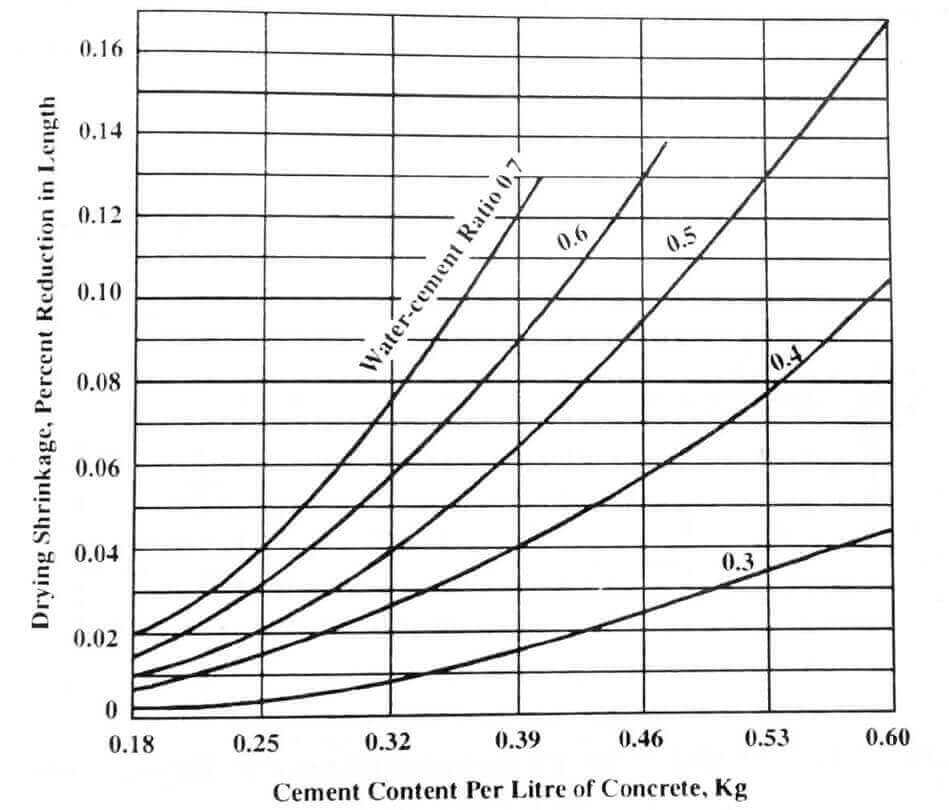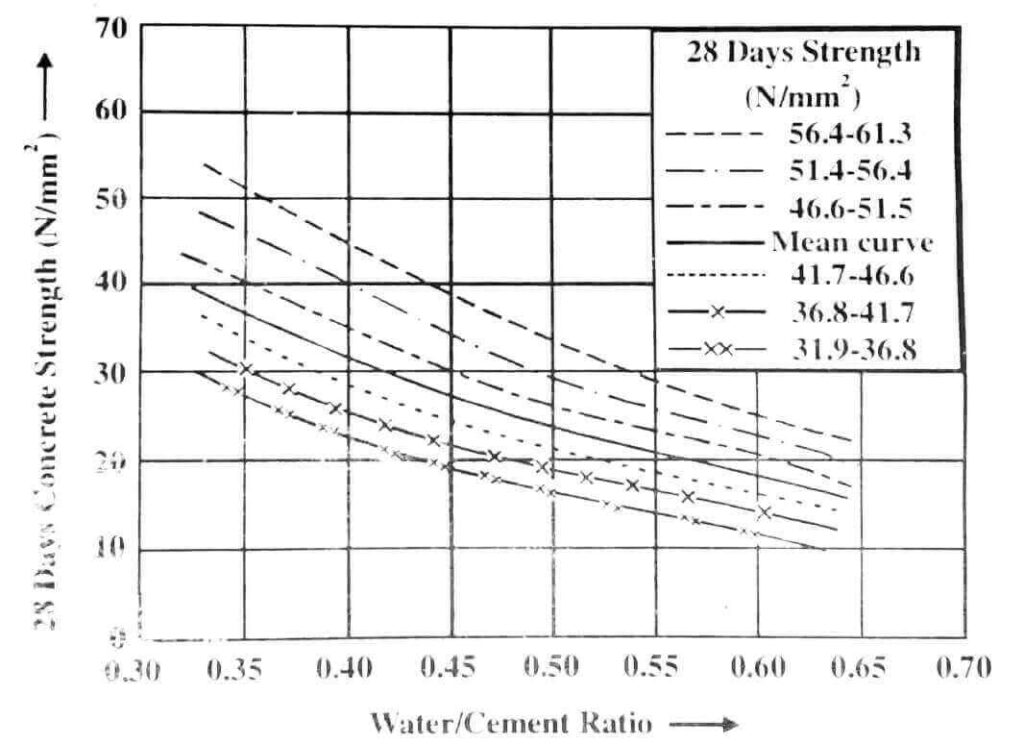What is Water Cement Ratio?
The ratio of the amount of water to the amount of cement by weight is termed the water-cement ratio. The strength and quality of concrete depend on this ratio.
The quantity of water is usually expressed in litre per bag of cement. if water required for one bag of cement is 30 litres, the water-cement ratio is equal to 30/50 = 0.6.
The water-cement ratio should be such that it should impart a reasonable degree of workability to concrete, excess water affects the durability and strength of the concrete.
A lesser water-cement ratio makes the concrete unworkable while the excess water-cement ratio is liable to segregation. keeping the quality and quantity of ingredients the same, it is the water-cement ratio that determines the strength of concrete.
Normally the water-cement ratio should be 0.4 to 0.6 as per IS Code 10262: 2009 for the nominal mix (M10, M15 …. M20).
Significance or Importance of Water-Cement Ratio
The volume change in concrete results in cracks and cracks are responsible for the disintegration of concrete.
It may now be added that permeability is the contributory factor to the volume change with the higher water-cement ratio being the fundamental cause of higher permeability.
Therefore, the use of higher water-cement ratio permeability-volume change-cracks-disintegration-failure of concrete is a cyclic process in the concrete.
Therefore, for durable concrete, the use of the lowest possible water-cement ratio is the fundamental requirement to produce dense and impermeable concrete.

It is generally recognized that the quality of hydration products and consequently the microstructure of the concrete in case of the low water-cement ratio is superior to the quality of microstructure that exist in the case of high water-cement ratio.
In concrete with a low water-cement ratio, the capillaries of the interconnected network are so fine that water can not flow through them i.e. the permeability decreases to such a level that these concretes are almost impervious to water.
The chloride ions diffusion in such concrete is 10 to 15 times slower than that in concretes of high water-cement ratio.
The low water-cement ratio concretes are less sensitive to carbonation, external chemical attack and other detrimental effects that cause a lack of durability of concrete.
A low water-cement ratio and adequate cover is the best way to protect reinforcing steel against corrosion.

The advent and use of superplasticizers have revolutionized the technology of making durable concrete by drastically reducing the water-cement ratio of concrete.
Presently the flowing of self-levelling concrete is being produced with a water-cement ratio as low as 0.25 or even 0.20.
This technology breakthrough, in conjunction with the use of cementing mineral additives, has enabled the production of highly durable high-performance concrete.
However, in low water-cement ratio concretes, there is not enough water available to fully hydrate all cement particles, only surface hydration of cement particles take place leaving a considerable amount of unhydrated core of cement grains.
The unhydrated core of cement grains constitutes strength in reserve. If for any reason, structural or environmental, cracks develop the unhydrated core gets hydrated on getting moisture or water penetrating through micro or microcracks.
The hydration products so generated seal the cracks and restore the integrity of concrete for long term durability.
How to Calculate Water Cement Ratio for Concrete?

The water to cement ratio for the mean strength of concrete is determined from the above figure for the strength of concrete versus the water to cement ratio for different values of 28 days compressive strength of cement or accelerated strength of reference concrete.
In the absence of both 28 days compressive strength of cement and accelerated strength of reference concrete, the mean curve for strength versus water to cement ratio as shown above figure can be used.
It is checked against the specified maximum water to cement ratio from durability requirements.
If the computed value is greater than the maximum specified value. Then the maximum specified value is adopted.
For determining water quantity for concrete first, we need to calculate cement quantity for the concrete mix.
For instance quantity of cement is 50 kg for the concrete mix.
Quantity of Water = Water cement ratio × Quantity of cement in kg
= 0.45 × 50 {Normally w/c ratio should be 0.4 t 0.6 as per IS 10262: 2009, taking = 0.45 }
= 22.5 liters
Now you have an idea of how to calculate the water-cement ratio for concrete mix.
Hope it will help you.
Be sure to share it with your friends.
Thanks!
Also, read
How to calculate the Quantity of Cement, Sand, Aggregate and Water For Concrete Mix?
Grade of Concrete and Their Uses – Concrete Mix Ratio
Pre-stressed Concrete – Definition, Methods, Advantages, Disadvantages
Honeycomb in Concrete – Effects, Causes & Prevention
Spalling of Concrete – Causes, Effects & Repair
Initial & Final Setting Time Test of Cement
Very very..nice information with details,flow diagrams systematic are given us.. thank you very much..👌👍🙏
Thanks for your valuable feedback. I am glad you find my article informative.